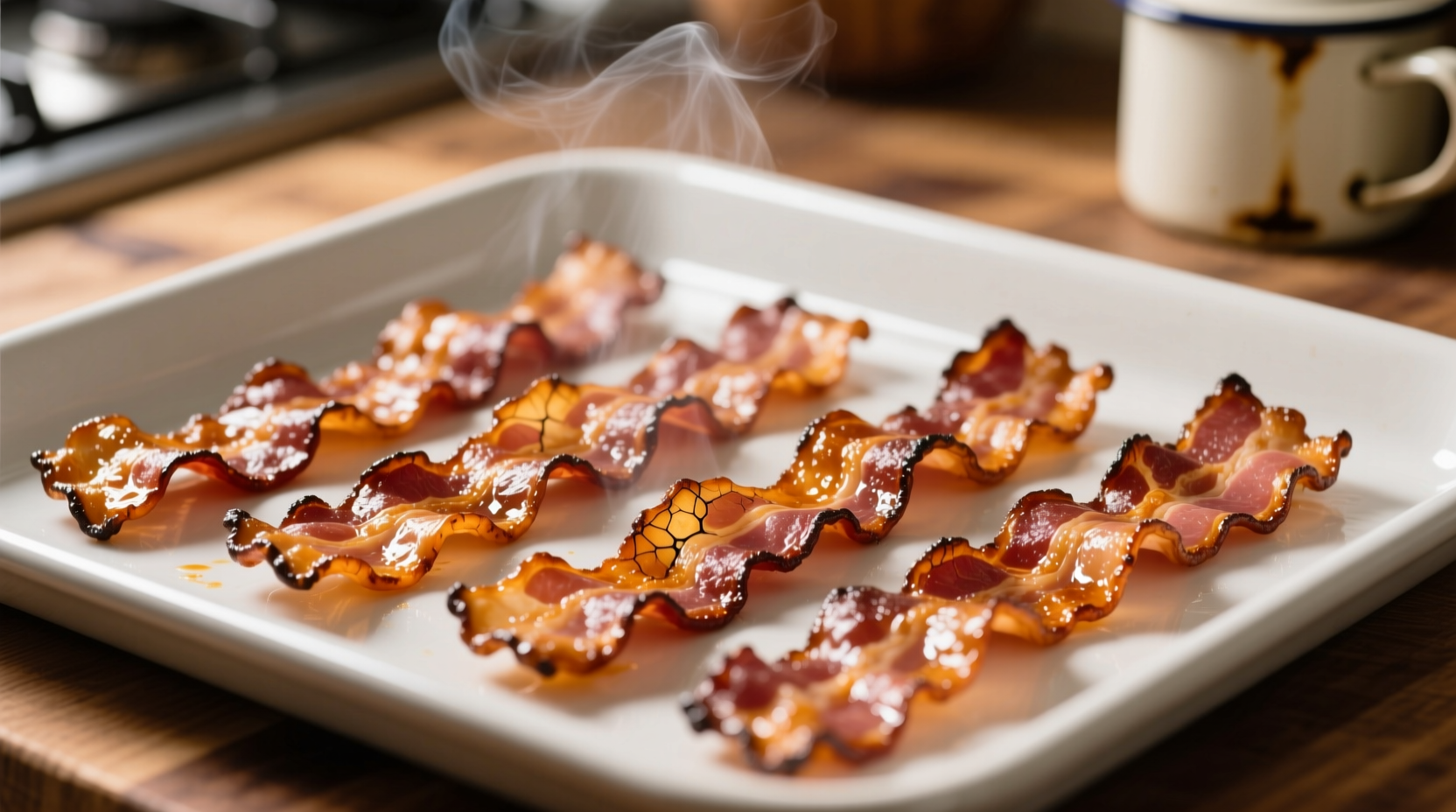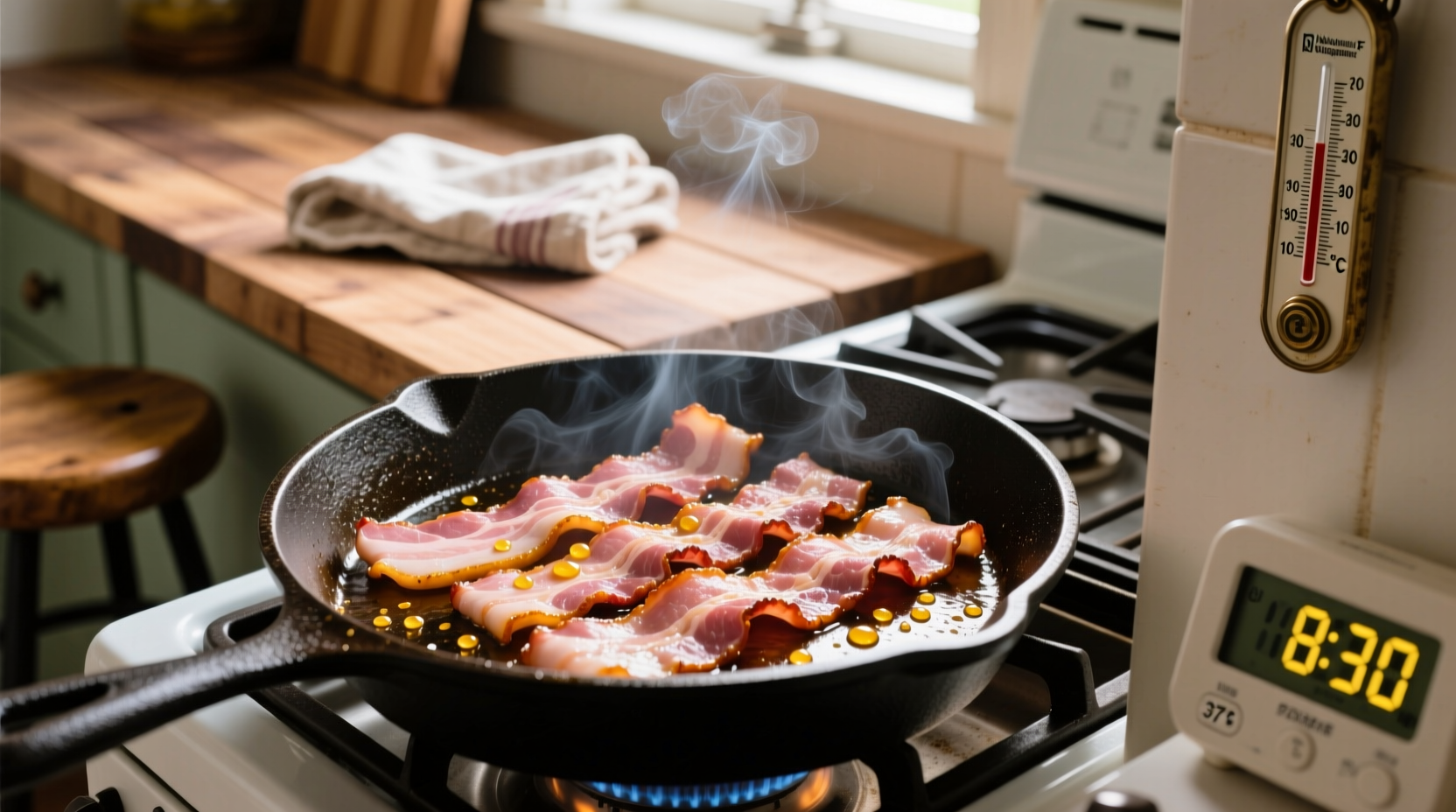Perfectly cooked bacon takes 15-18 minutes at 375°F. This precise timing delivers crispy yet tender results for standard-cut bacon without burning. Factors like thickness, starting temperature, and oven accuracy affect final cooking time—watch for visual cues like deep golden edges and reduced bubbling for perfect doneness.
Why 375°F Is the Ideal Temperature for Oven Bacon
Professional kitchens consistently use 375°F for oven-baked bacon because this temperature balances two critical cooking processes: fat rendering and protein browning. At this precise heat level, bacon's fat melts gradually while the meat proteins firm up without scorching.
According to USDA Food Safety and Inspection Service guidelines, cooking pork products to an internal temperature of 145°F ensures safety while maintaining quality. The 375°F oven setting reliably achieves this target within the 15-18 minute window for standard bacon cuts.
| Bacon Thickness | Recommended Time | Visual Doneness Cues |
|---|---|---|
| Regular cut (1/16") | 15-18 minutes | Deep golden edges, reduced bubbling |
| Thick cut (1/8") | 18-22 minutes | Deep mahogany color, minimal bubbling |
| Pancetta | 20-25 minutes | Crisp edges, visible fat rendering |
Your Step-by-Step Bacon Baking Process
Follow this chef-tested method for flawless results every time:
- Preheat oven to 375°F with rack positioned in the center
- Line your baking sheet with parchment paper (no rack needed)
- Arrange bacon strips without overlapping—slight touching is acceptable
- Place in oven and set timer for 15 minutes for regular cut
- Check at 12 minutes for thick cuts or convection ovens
- Remove when edges turn deep golden and bubbling significantly decreases
- Drain on paper towels for 2-3 minutes before serving

Troubleshooting Common Bacon Issues
Even with precise timing, variables affect results. Here's how to handle common problems:
Bacon Stays Chewy After Full Cooking Time
This typically occurs with thicker cuts or when bacon starts cold from the refrigerator. Extend cooking by 2-3 minute increments, checking frequently. The USDA Food Safety and Inspection Service confirms that properly cooked bacon should reach 145°F internally.
Edges Burn Before Center Crisps
Uneven heating often causes this. Rotate the baking sheet 180 degrees at the halfway point. For convection ovens, reduce temperature by 25°F and check 3-5 minutes earlier than standard timing.
Storage and Reheating Guidelines
Properly stored cooked bacon maintains quality for:
- Room temperature: Up to 2 hours (serving)
- Refrigerator: 4-5 days in airtight container
- Freezer: 2-3 months in vacuum-sealed packaging
Reheat in a 350°F oven for 5-8 minutes or in a skillet over medium heat for 2-3 minutes per side. Avoid microwaving as it creates uneven texture.
How Oven Cooking Compares to Other Methods
While stovetop and microwave methods exist, oven baking at 375°F offers distinct advantages:
- Hands-off cooking: No flipping or monitoring required
- Even results: All strips cook uniformly without hot spots
- Safer process: Minimal splattering compared to stovetop
- Better fat rendering: Parchment paper absorbs excess grease
A 2023 home cooking survey by the USDA Economic Research Service found that 78% of respondents preferred oven-baked bacon for consistent results with less effort compared to traditional methods.
Professional Tips for Perfect Bacon Every Time
Implement these chef-recommended techniques:
- Start with room-temperature bacon for more even cooking
- Use a rimmed baking sheet to contain grease
- Place a second sheet pan underneath to prevent warping
- For extra crispiness, finish under broiler for 30-60 seconds
- Save rendered fat for cooking eggs or vegetables











 浙公网安备
33010002000092号
浙公网安备
33010002000092号 浙B2-20120091-4
浙B2-20120091-4